Lampworking with glass jewellery captures the imagination….
Lampworking with glass jewellery captures the imagination….
Lampworking is the skill of melting glass, using a flame and a myriad of colours. Typically made in Murano, although other parts of the world are popular too, these glass rods may be made into intricate designs and incorporated into jewellery or ornaments.
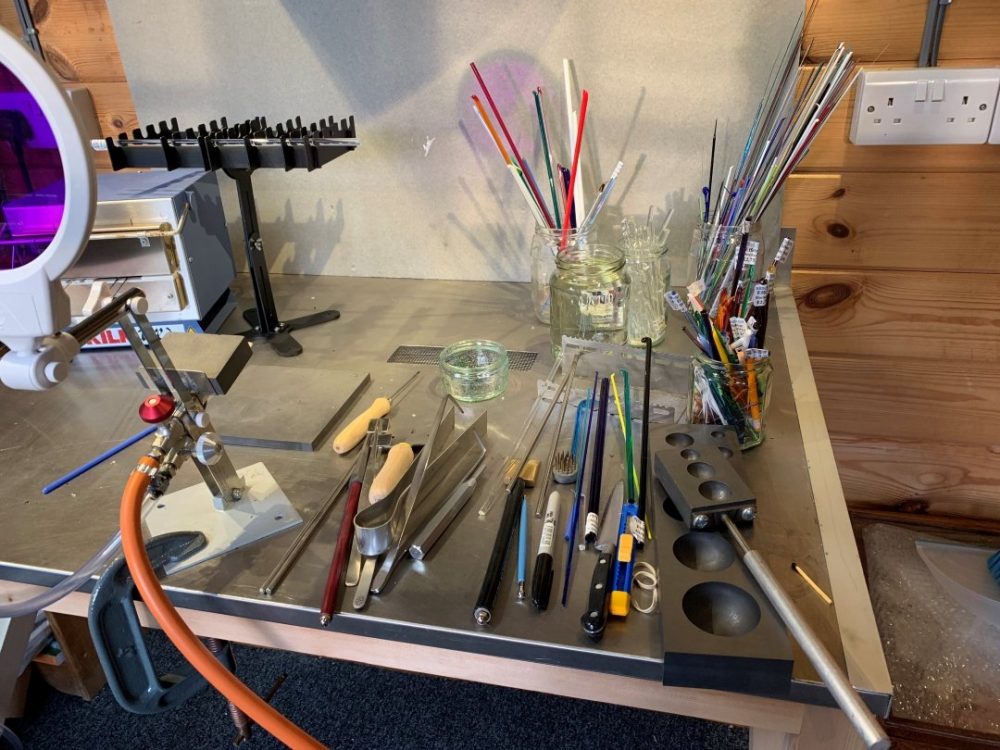
Today the glass is melted using a torch, but years ago a little lamp flame or fire pit was used. The first Lampworkers were probably the Egyptians 1500BC who discovered that sand (silica) once melted and mixed with metallic compounds created the most amazing colours.
Grab a coffee and look at this article as it explains quite a lot: https://workingtheflame.com/history-of-glassblowing/
My torch has a mixture of Propane and Oxygen, allowing for a very hot, yet controllable, flame which may be varied to get the desired results. Lampworking with glass jewellery is a skill which evolves over the years and cannot be learned instantly.
A kiln for annealing the glass is essential as it allows the glass to realign its molecules by holding it at a certain temperature for several hours before slowly, slowly cooling it. The stresses and strains which would otherwise be present are thus removed. It does add to the overall cost of production but it means that the glass will potentially last for thousands of years. A cheaper option is to cool the glass with Vermiculite beads or a blanket which stops the glass cracking as it cools, but does not align those molecules, so when the item is dropped it breaks… be warned because I am sure many branded glass jewellery houses don’t bother annealing.
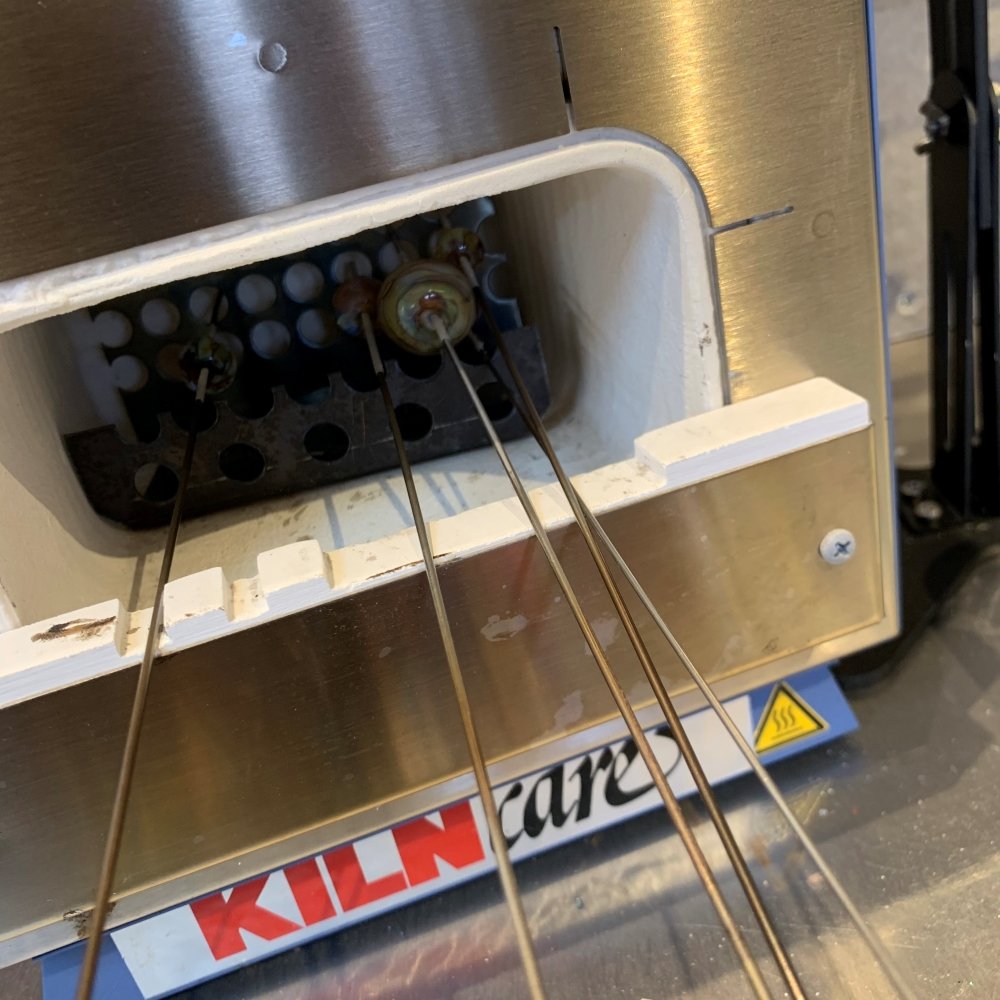
I started off loving the bright primary colours, yet I now prefer the more abstract, free flowing colours. It is a skill of calm, patience and courage: if you try to force it, the glass will not play; if you are distracted, it kicks you in the shins; if you take your time, coaxing it gently and admiring it greatly then it will reward you. You need to be brave when lampworking with glass because sometimes you need to heat it up to a sloppy liquid and only then do the colours start to sing – or you lose it and your pattern vanishes in a mess. I catch myself smiling as I work so I must be enjoying it! You never know what the kiln will reveal as the glass changes overnight and what you thought was a disaster can be a perfect gem – or in my case a fluke!
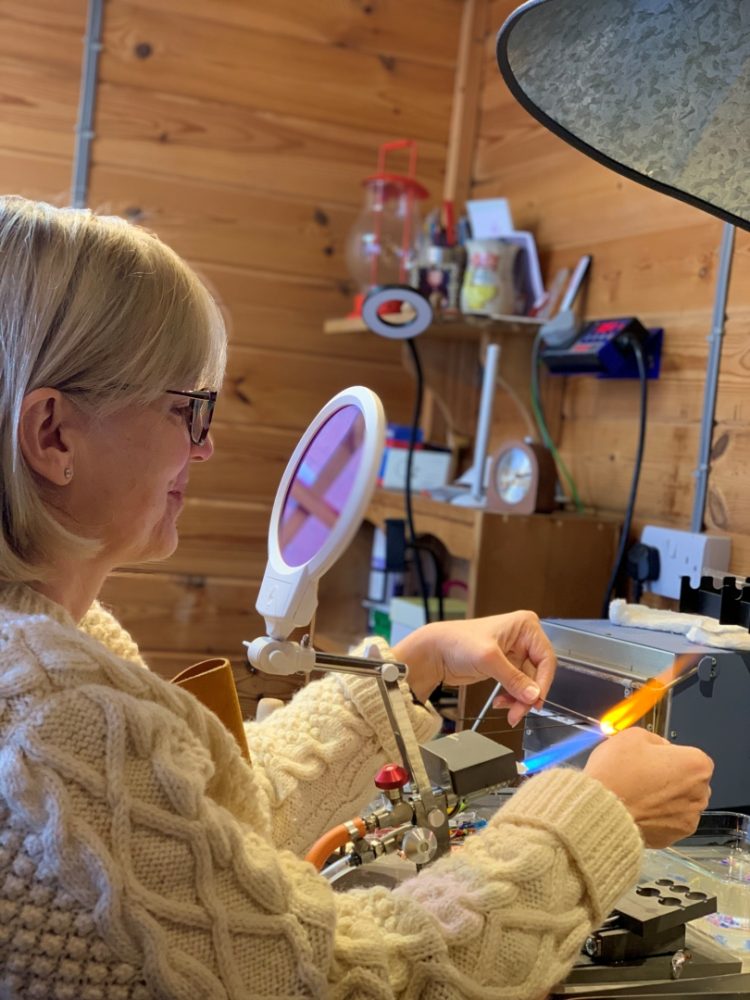
Each creation has its own personality and is sorely missed if lost by accident, as I recently proved when one little creation rolled away from me resulting in major DIY surgery, only to find it hiding behind my laptop laughing at me…
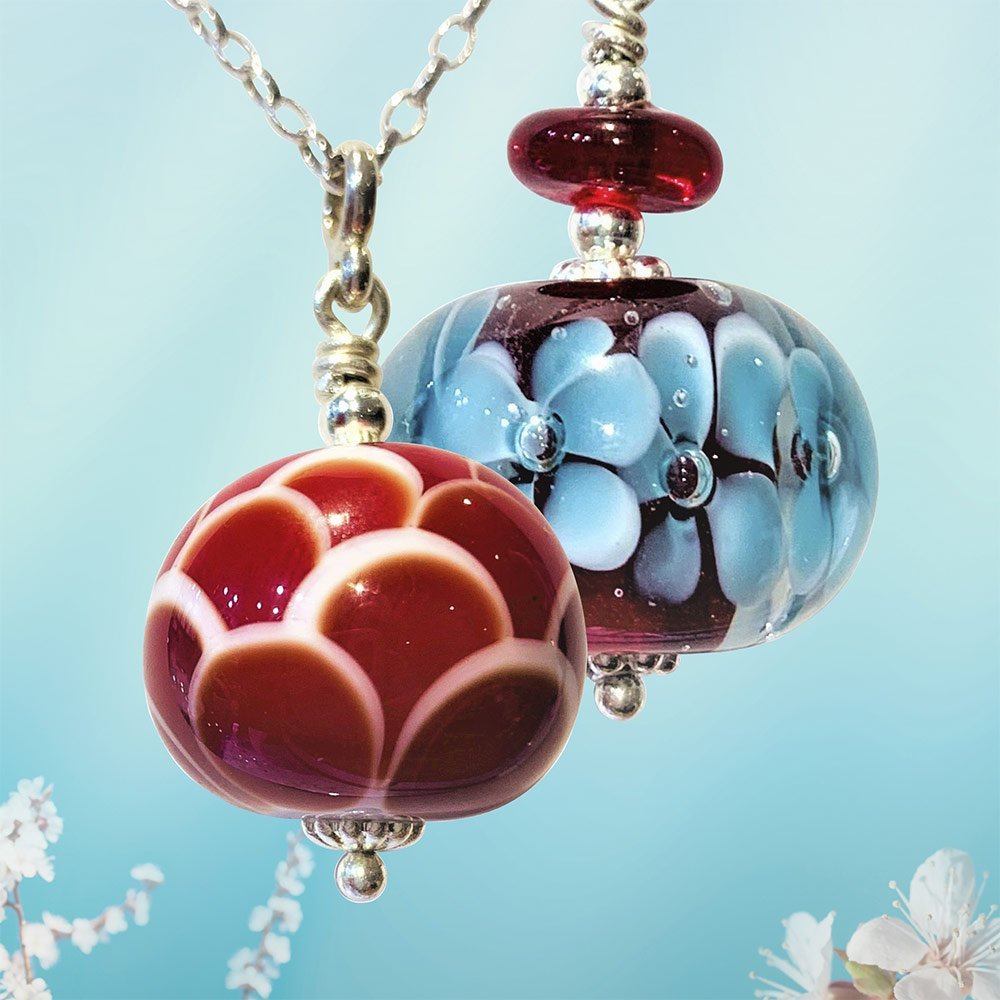
Glass’ Myriad of Colours…
The amazing colours of glass ranges from the basics: crystal clear, black and white to the technical and highly reactive Silver glass and other unique handmade glasses. They are all precious and unique as together they react and respond with an infinite range of colours and patterns, shapes and possibilities.
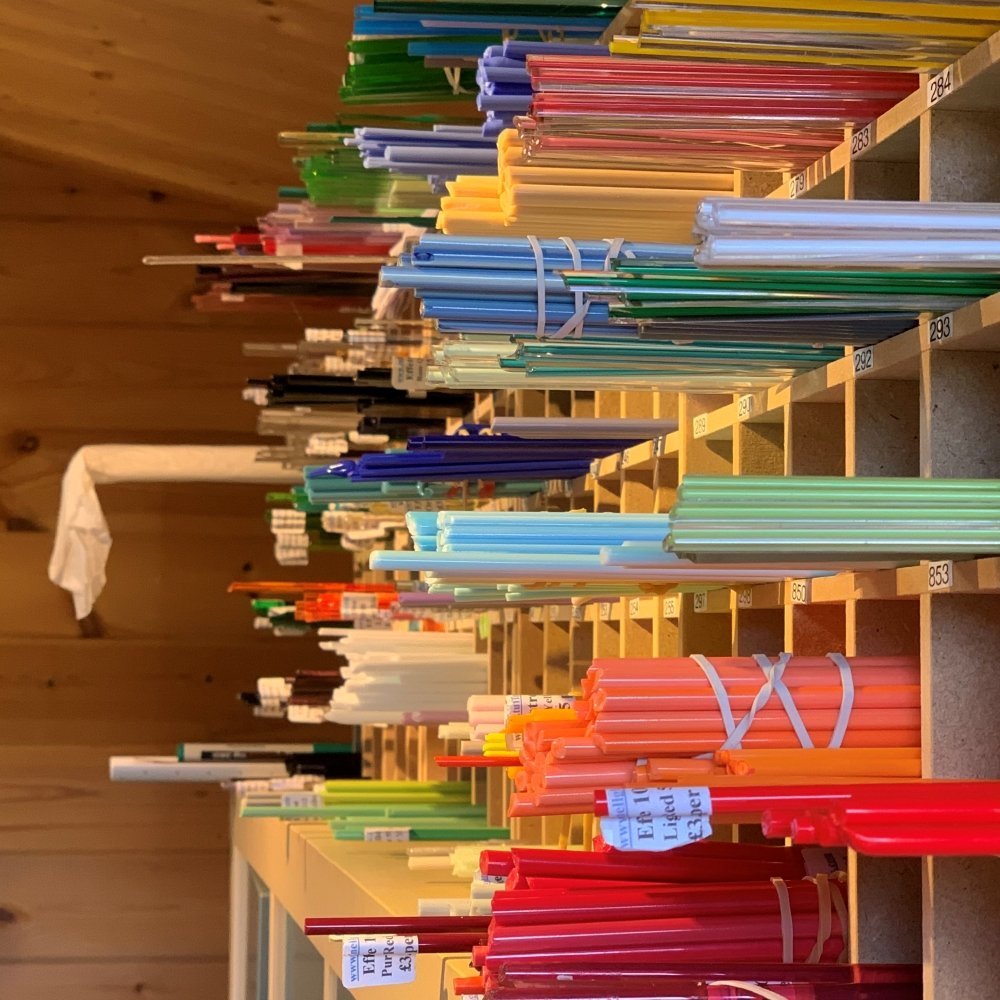
The Magical Twists And Swirls of Glass
Encasing, twisting, applying dots and stripes, generally playing with glass is all a huge pleasure….
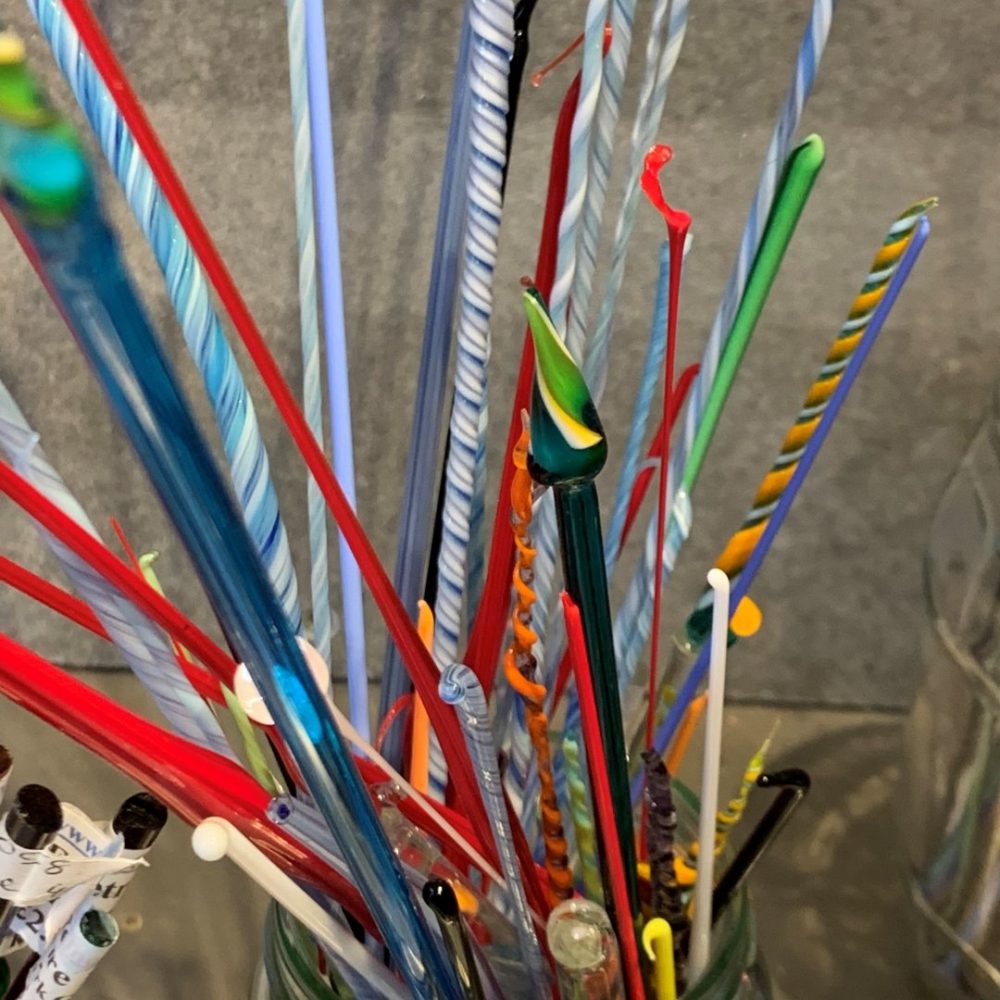
The Challenge of Silver Glass
Silver glass is a new venture for me. There are many types and I am just beginning to learn how they behave. Some are reducing (low oxygen) and some are striking (very hot glass, cooled and then heated up again to bring out the colours). They look different when placed over different glasses so for example, working over a copper rich glass gives a strong oxidised line as per the centre orange “starfish” bead below, and encasing silver glass with clear can preserve the silver lustre resulting in a beautiful shimmer.
Here are a few of my first forays into the world of Silver Glass…
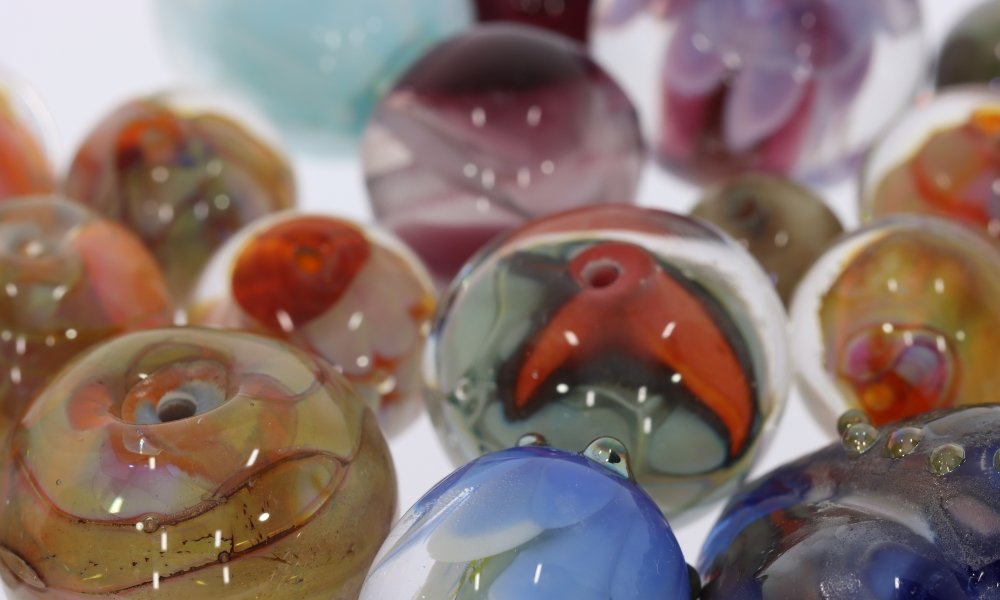
Valentine’s day
Making hearts for the big day is a delightful pastime and swirls, dots and shimmers all add to the joy.
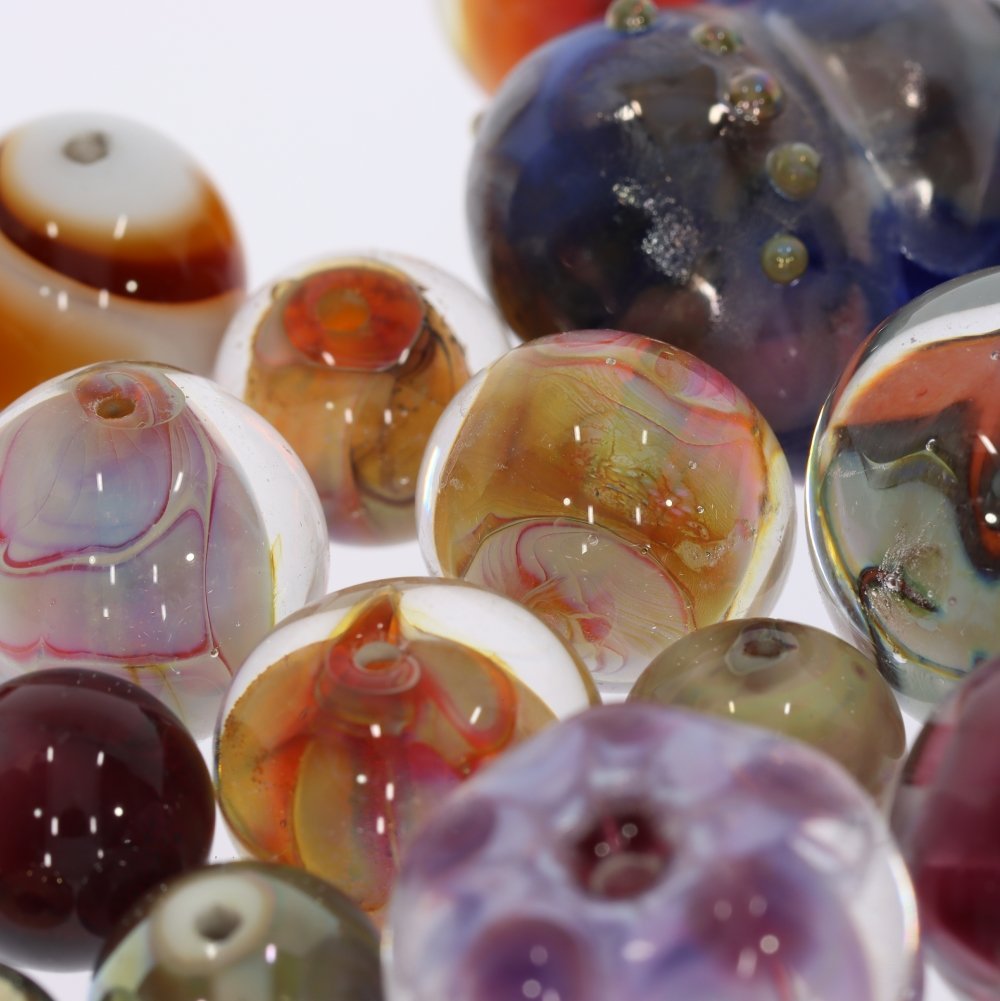
Conclusions on Glass…
It isn’t valuable but it is precious. Time and effort go into each little creation and they are all unique.
